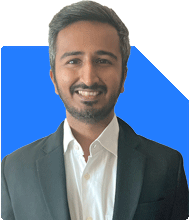Ramalingam Kalirajan |10334 Answers |Ask -Follow
Mutual Funds, Financial Planning Expert - Answered on May 16, 2024
He has an MBA in finance from the University of Madras and is a certified financial planner.
He is the director and chief financial planner at Holistic Investment, a Chennai-based firm that offers financial planning and wealth management advice.... more

I would like to start an SIP UNDER NIFTY 50 INDEX FUND FOR 15 YRS HAVING MONTHLY SIP AMOUNT 6000-9000. WILL IT BE THE RIGHT WAY TO PUT MY HARD EARN MONEY IN MUTUAL FUND & WILL IT BE THE INTELLIGENT WORK TO CREAT WEALTH...
Benefits of Nifty 50 Index Fund SIP
Investing in a Nifty 50 Index Fund offers several advantages:
Diversification: The Nifty 50 Index comprises 50 large-cap stocks representing various sectors, providing inherent diversification to your portfolio.
Low Cost: Index funds typically have lower expense ratios compared to actively managed funds, resulting in cost savings over time.
Passive Management: With an index fund, you're not relying on fund managers' active decisions, which can sometimes lead to underperformance.
Long-Term Growth Potential: Historically, equity markets have shown long-term growth trends, and investing systematically can help harness this potential.
Disadvantages of Index Funds Compared to Active Funds
While index funds offer certain advantages, they also have some limitations:
Limited Potential for Outperformance: Since index funds aim to replicate the performance of a particular index, they typically don't outperform the market significantly. Actively managed funds, on the other hand, have the potential to beat the market through skilled fund management.
No Tactical Asset Allocation: Index funds follow a passive investment strategy, which means they do not make tactical asset allocation decisions based on market conditions or economic outlook. This lack of flexibility may lead to missed opportunities during market fluctuations.
Inability to Avoid Underperforming Stocks: Index funds hold all stocks within the index, including underperforming ones. In contrast, active fund managers have the flexibility to exclude or reduce exposure to such stocks, potentially enhancing returns.
Market Cap Bias: Index funds allocate capital based on market capitalization, leading to higher exposure to overvalued stocks and lower exposure to undervalued ones. Actively managed funds can adjust allocations based on fundamental analysis and market dynamics.
Conclusion
While starting an SIP in a Nifty 50 Index Fund can be a sensible way to invest for the long term, it's essential to recognize the limitations of index funds compared to actively managed funds. Consider your investment goals, risk tolerance, and preference for active fund management before making a decision.
Best Regards,
K. Ramalingam, MBA, CFP,
Chief Financial Planner,
www.holisticinvestment.in
You may like to see similar questions and answers below
Omkeshwar Singh | Answer |Ask -Follow
Head, Rank MF - Answered on Oct 19, 2022
Vivek Lala | Answer |Ask -Follow
Tax, MF Expert - Answered on Jul 03, 2023
Ramalingam Kalirajan |10334 Answers |Ask -Follow
Mutual Funds, Financial Planning Expert - Answered on Jul 12, 2024
Ramalingam Kalirajan |10334 Answers |Ask -Follow
Mutual Funds, Financial Planning Expert - Answered on Jul 19, 2024
Ramalingam Kalirajan |10334 Answers |Ask -Follow
Mutual Funds, Financial Planning Expert - Answered on Oct 05, 2024
Nayagam P P |10540 Answers |Ask -Follow
Career Counsellor - Answered on Aug 26, 2025
Nayagam P P |10540 Answers |Ask -Follow
Career Counsellor - Answered on Aug 26, 2025
Nayagam P P |10540 Answers |Ask -Follow
Career Counsellor - Answered on Aug 26, 2025
Nayagam P P |10540 Answers |Ask -Follow
Career Counsellor - Answered on Aug 26, 2025
Nayagam P P |10540 Answers |Ask -Follow
Career Counsellor - Answered on Aug 26, 2025
Nayagam P P |10540 Answers |Ask -Follow
Career Counsellor - Answered on Aug 26, 2025
Nayagam P P |10540 Answers |Ask -Follow
Career Counsellor - Answered on Aug 26, 2025
Nayagam P P |10540 Answers |Ask -Follow
Career Counsellor - Answered on Aug 26, 2025
Nayagam P P |10540 Answers |Ask -Follow
Career Counsellor - Answered on Aug 26, 2025
Nayagam P P |10540 Answers |Ask -Follow
Career Counsellor - Answered on Aug 26, 2025



















